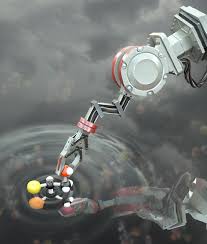What is RoboMapper?
In a groundbreaking development, scientists have introduced RoboMapper, a cutting-edge robot designed for material testing. This innovative technology promises to revolutionize the process of identifying materials for solar cells, offering greater efficiency and sustainability. The robot has already shown remarkable results, identifying perovskite materials with enhanced stability and efficiency in solar cells.
Identifying Perovskite Materials
RoboMapper’s primary focus is on identifying perovskite materials, known for their superior light absorption compared to traditional silicon, making solar cells lighter and more efficient. The robot has successfully pinpointed 150 different compositions of these materials in an impressively short time, significantly outperforming manual efforts.
Key Testing Parameters
The robot rigorously tests the materials for three crucial characteristics: the crystalline structure of a perovskite, the optical characteristics represented by the band gap, and the stability when exposed to intense light. This comprehensive testing process ensures the identification of optimal materials for solar cell applications.
Advancements Over Conventional Methods
Before the introduction of RoboMapper, the conventional material testing process was considerably lengthier and energy-consuming. Scientists had to test each sample individually using multiple instruments. However, RoboMapper streamlines this process by conducting parallel testing on multiple materials simultaneously, significantly reducing time and energy consumption.
Overcoming Challenges in Solar Cell Development
The development of stable perovskite-based solar cells has been a major challenge. These materials tend to degrade on exposure to light, compromising their valuable properties. RoboMapper’s efficient testing has already resulted in significant strides towards overcoming this challenge, providing hope for more durable and efficient solar cells.
Reduced Greenhouse Gas Emissions
An additional advantage of RoboMapper is its positive impact on the environment. The new method reduces greenhouse gas emissions from the characterization process by an impressive tenfold.
Month: Current Affairs - July, 2023
Category: Science & Technology Current Affairs








